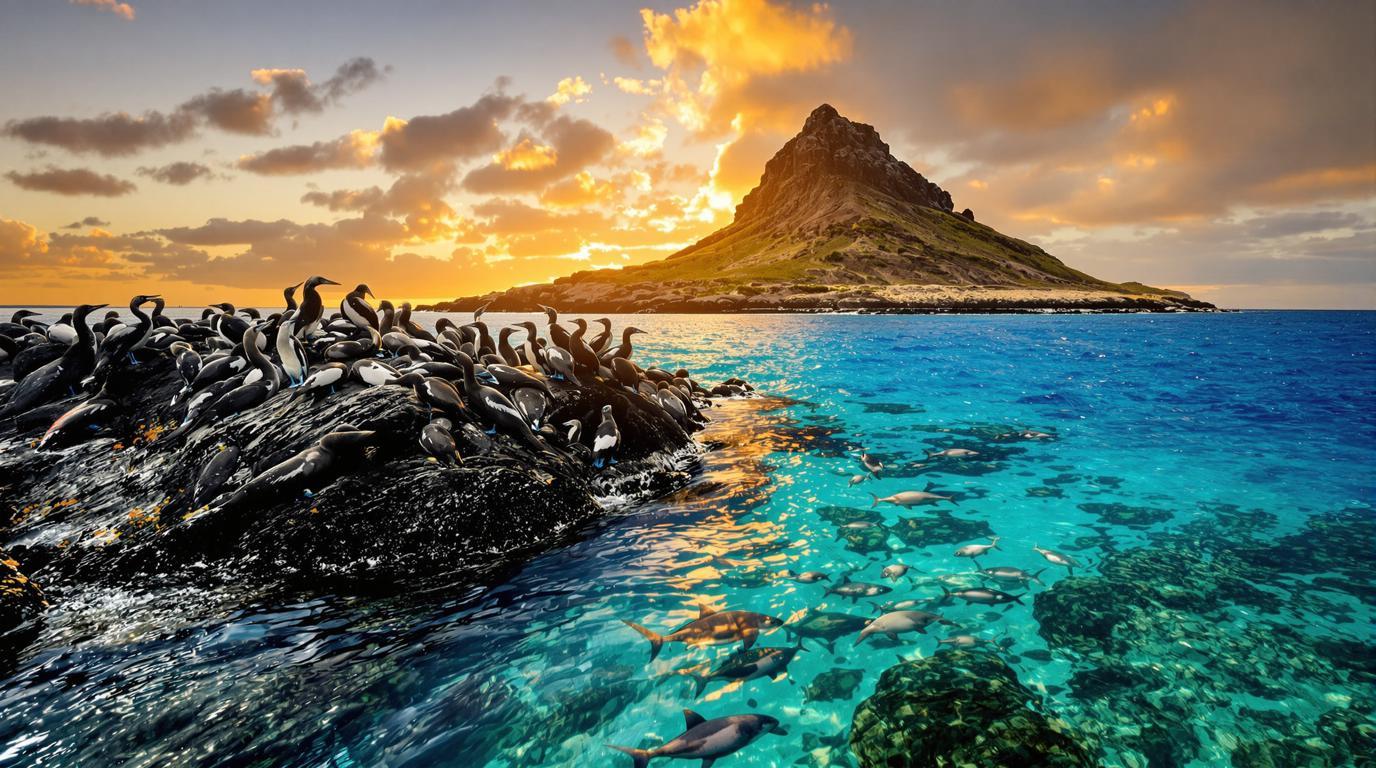Discovering Darwin’s Living Laboratory: The Untamed Natural Wonders of San Cristóbal, Galápagos
Where evolution wrote its masterpiece
At coordinates 0.8300° S 89.5000° W, floating in splendid isolation 600 miles from mainland Ecuador, San Cristóbal Island stands as the easternmost sentinel of the Galápagos archipelago. This UNESCO World Heritage site isn’t merely a destination—it’s a living time capsule where Darwin’s theories of natural selection continue to unfold before your eyes.
Unlike the crowded beaches of untouched Caribbean peninsulas, San Cristóbal offers something profoundly more transformative: an intimate encounter with evolution itself.
The seafaring welcome committee you never expected
Step off the ferry at Puerto Baquerizo Moreno and prepare for an unusual greeting. Sea lions—not tour guides—claim the harbor’s benches, boardwalks, and boats with lazy confidence. These blubbery locals establish the first rule of Galápagos: humans are merely visitors in this animal kingdom.
“We call them the mayors of our town,” laughs Maria Gonzalez, a lifelong resident. “They were here first, and they make sure we never forget it.”
Kicker Rock: where two worlds collide
Rising dramatically from sapphire waters, the towering remains of an ancient volcanic cone known as León Dormido (Sleeping Lion) or Kicker Rock create the island’s most iconic silhouette. The 500-foot formation splits the sea into a narrow channel where two ecosystems spectacularly converge.
Beneath the surface, Galápagos sharks, hammerheads, and sea turtles navigate the deep blue waters alongside playful sea lions in a marine ballet that rivals the complexity of any high-altitude Himalayan adventure.
The world’s only freshwater oasis in an ocean archipelago
El Junco Lagoon crowns the island’s highlands at 2,300 feet above sea level—the only permanent freshwater lake in the entire Galápagos. This emerald crater captures clouds and rainwater, creating a surreal sight: magnificent frigatebirds with six-foot wingspans swooping down to bathe in what feels like a mirage in this volcanic landscape.
The beach where marine iguanas outnumber humans 100 to 1
La Lobería beach presents a prehistoric tableau—black marine iguanas, evolutionary marvels that learned to swim and snort salt, bask on volcanic rocks by the dozens. These remarkable reptiles, found nowhere else on Earth, have adapted to feed underwater, diving up to 30 feet deep to graze on algae.
Where tortoises teach us about longevity
At the Galapaguera de Cerro Colorado breeding center, giant tortoises lumber through their natural habitat, some approaching two centuries in age. Unlike the ancient history found in Roman cities where emperors once walked, here you witness living history—creatures that hatched before the American Civil War.
“Each tortoise carries centuries of wisdom in their eyes,” observes Eduardo Vaca, a conservation guide. “They remind us how brief our human existence truly is.”
The blue-footed dance floor of Punta Pitt
The northeastern tip of San Cristóbal hosts nature’s most charming courtship ritual. Male blue-footed boobies lift their cerulean feet in an elaborate dance, showing potential mates the vibrance of their coloring—an indicator of health and fishing prowess that puts human dating rituals to shame.
A culinary frontier where sustainability rules
Unlike the sweet lemons where France meets Italy, San Cristóbal’s cuisine centers on what can be sustainably harvested. At oceanfront restaurants like El Descanso Marinero, the catch-of-the-day arrives directly from local fishermen, often prepared simply with Ecuadorian spices to highlight nature’s flavors.
The hidden beach only locals know
Puerto Chino, a secluded cove on the southeastern coast, rivals the beauty of any hidden Seychelles beach. Accessed via a short trail through fragrant palo santo trees, its powder-white sands and turquoise waters often remain empty even during peak season—a rarity in today’s over-touristed world.
The protective paradox of tourism
The $100 park entry fee that might initially shock visitors funds the very conservation efforts keeping these islands pristine. This deliberate barrier creates the Galápagos paradox: tourism both threatens and protects this ecosystem, requiring a delicate balance that prioritizes preservation over profit.
San Cristóbal isn’t merely a destination—it’s a profound reminder of our place in the natural order. Here, in this isolated evolutionary laboratory, you don’t just observe nature; you become deeply, humblingly aware of belonging to it.
